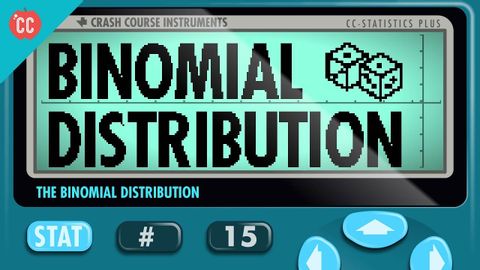二項分布クラッシュコース統計学 #15 (The Binomial Distribution: Crash Course Statistics #15)
林宜悉 が 2021 年 01 月 14 日 に投稿  この条件に一致する単語はありません
この条件に一致する単語はありません- v.t./i.出場する;計算する;思う;思う
- n.姿 : 体形;数字;人物像;図表;著名人;姿の輪郭;数字
US /ˈævərɪdʒ, ˈævrɪdʒ/
・
UK /'ævərɪdʒ/
- n. (c./u.)平均
- v.t.平均する
- adj.典型的な : 普通の : ありふれた : 普段の
US /ˈdʒɛnərəl/
・
UK /'dʒenrəl/
- adj.一般的な;大まかな;広範囲に適用できる;総司令官の
- n. (c.)大将
- n. (c./u.)一般大衆;一般的な研究分野
US /'kaɪndə/
・
UK /'kaɪndə/
- n.〜のような
- adv.少し : ちょっと;一種の : ある意味で;~たい気がする
エネルギーを使用
すべての単語を解除
発音・解説・フィルター機能を解除

